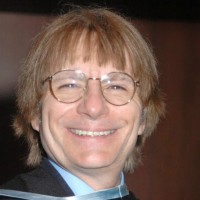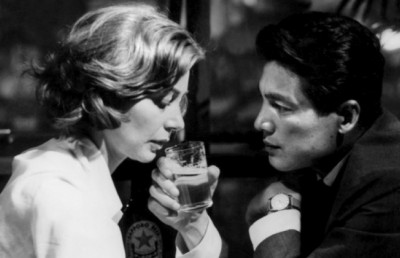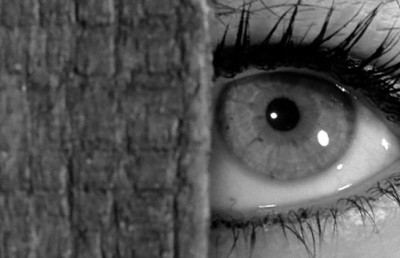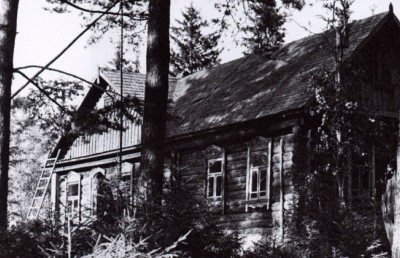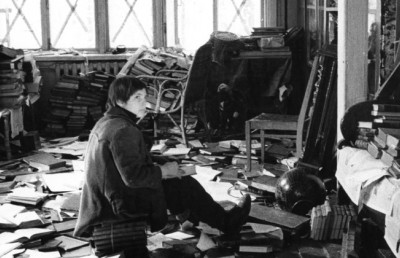Toward a Synthesis of Cinema -A Theory of the Long Take Moving Camera, Part 1
Bazinian Theory
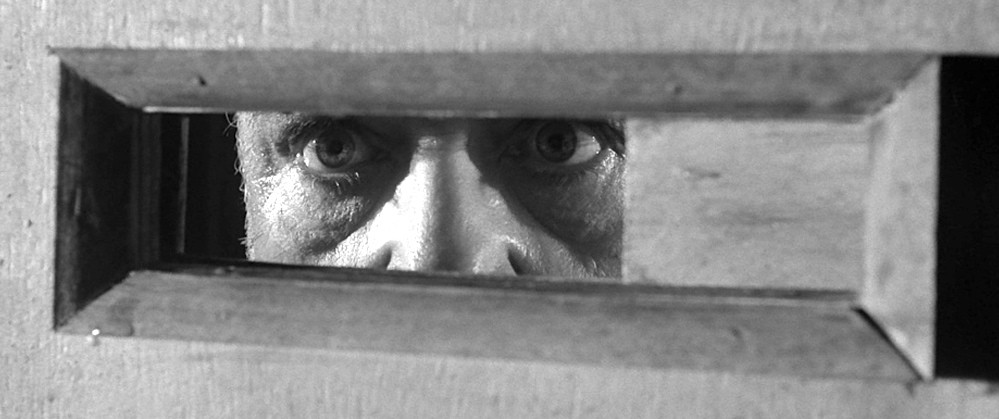
This two-part paper will investigate Orson Welles’ The Trial (1963) as a model to explicate Brian Henderson’s long take theory. Instead of arguing for or against Henderson’s critical standpoint, it will use its classification scheme as a basis for a more thorough understanding of the theoretical “gap” that exists between the two institutional pillars of cinema, that is, the exclusive theories of Sergei Eisenstein and Andre Bazin. It should be pointed out that other less popularized theories exist in cinema, but they have not been so influential on the practicing filmmakers as the Eisenteinian montage and Bazinian reality theories.
This essay points the way for an approach to the development of a theory of the long take moving camera; and in so doing, it foreshadows a cinema of the future where film becomes a systematic process (eg. a cinema of becoming) that exists in a “gap” between reality and mentality, between perfect registration and pure conceptualization, and between the theories of Bazin and Eisenstein.
First, the hypothetical assumption is that cinema is strongly driven by an aesthetic of sensation and thought [eg. the direct perception of time (time-images), the kinesthetic sensation of movement (movement-images) or the fleeting feeling of memory (thought-images)]. Such a “thought-sensation” aesthetic is the foundation for an “embodiment theory” which is supported by Susan Sontag, as described in her essay “Against Interpretation.” She explains (paraphrasing her words) that filmmaking is distinct from the other art forms, such as the novel, because there is more than content in it. Cinema is a language of forms that can overwhelm content, and this fact is exemplified in camera movements, cuts, and frame compositions. Moreover, the immediate sensory experience should be the supreme goal of film art, and the ability to see, hear and feel should supersede interpretation; and finally, Sontag defines meta-criticism in film as an “embodiment theory” based on an aesthetic of sensation: “The function of criticism should be how it is what it is, even that it is what it is, rather than to show what it means.” 1
Furthermore, the aesthetics of sensation is driven home by Barbara Kennedy who discusses the cinema of becoming which she bases on a molecular paradigm developed from Deleuzian ideas. 2 ] Kennedy concludes her book (entitled Deleuze and Cinema) by saying:
I have established how the molar (i.e. an assemblage) elements of film theory can work along side newly created ideas developing from Deleuzian ideas, a molecular paradigm … I don’t foresee this use of both the molar and the molecular as in any way a new binary distinction. Rather, the ‘in-between’ space of the molar and the molecular may be compared, though not identified, with the space of cyborg-becoming, a space which has no boundaries within boundaries, a place which is not strictly hybridized space, but a space of continual motion, movement and becoming. A neo-aesthetics of sensation enables this consideration of how film impacts, how it innervates and engages as a material capture, as an event, as a processuality … Vision and sound are not purely experienced through representation, through the visual and the aural, but through the materiality of a whole range of bodies, from deeper engagement of body/brain and world, bodies which are human, non-human, technologized and machinic. (Kennedy, 210) The Deleuzian concept of becoming as applied to a processual mechanics of cinema may shed some light on what the cinema (i.e. a “post-post” cinema) may look like in the future.
In 1971, Brian Henderson points out (in his book A Critique on Film Theory) that no approach had yet been developed to unify the fragmented theories of cinema. He states that:
… whereas classifications of philosophic theories usually concern not fragments of theories or attempted theories but only fully complete approaches to the problem, it is possible that there has not yet been a comprehensive or complete film theory. The underdevelopment of film theory, however, may itself be a reason for close analytical work, including a classification scheme of the principal approaches already taken. 3
Modern theories of cinema are sparse as compared to other fields of study (eg. ethics and aesthetics) and those existing formulations are fragmented at best. Henderson admits that a new holistic theory is needed since the transfigurations of the cinema, especially after the advent of television (i.e. early 1950), cannot be fully explained by the classical theories. In order to formulate a novel theory, it is necessary to construct a well-rooted foundation, one that allows for inclusion rather than exclusion, one that is capable of molding itself to whatever schematic approach that might come its way (i.e. metaphorically speaking, a theory that is as fluid as water, having the potential to shape itself to any critical receptacle), and one that incorporates the principles from the older classical theories and the practical lessons learned therein.
And just as Einstein’s theory of relativity collapses to Newton’s laws of gravity as the particle’s velocity becomes much less than the speed of light; so too, must a modern theory of cinema be able to fold over into the older theories of the past, as certain cinematic categories (eg. style and form) approach particular classical settings, such as the filmic frameworks of Hollywood’s action-images (mostly classical) or Neorealism’s fact-images (mostly modern and sometimes semi-classical). The modern theory must be able to unify the old principles with those new insights which emerge from the renewed attempts to re-formulate cinema, as it pushes the boundaries of cinematic investigations into the uncharted domains of cinematic thought; for instance, Deleuze’s time-images which go beyond the movement-images and express a kind of mental reality where characters seem detached from worldly events. Furthermore, just as physicists have not been able to merge the force of gravity with the other fundamental forces (i.e. the electromagnetic, weak and strong forces), that is, to close the “gap” between space, time and matter within the universal energy field), so too, film theoreticians are left with the uncertainty of being able to close the “gap” between montage (cutting) and long take (not cutting).
Even Henderson admits to a certain kind of underdevelopment in the evolution of film theory, a condition that may be inherent to the process of cinema itself, as he explains more concretely about both montage and long take theory:
Both Eisenstein montage theory and Bazinian long-take theory not only ignore this stylistic area [expressive editing + mise-en-scène], they deny its existence, both preferring the either/or mentality that each sees as necessary to its own survival … Stylistic combinations of long-take and cutting techniques fall exactly between the two schools, in that they combine elements of the favored style of each; but they are treated as falling outside of each because each prefers not to recognize them. This is a prime instance of serious omission in the classical film theories, indeed of an entire category of film expression missing from them. This limitation is compounded in importance by the expressive impact that editing has upon the long-take sequence. 4
It is a determined fact that Eisenstein represents reality (i.e. reality is manipulated as art remains a pure constant), that is, reality is taken to art; while Bazin presents reality (i.e. it is the art that changes and never the reality), in other words, art is taken to reality. Henderson’s argument naturally leads us to Orson Welles who is one of the foremost long take and expressive editing directors of the modern film era, a filmmaker who has successfully functioned in the forbidden “gap” of classical cinema. But before proceeding with the discussions of long take directors (especially Welles) and their films, it is necessary to analyze the relevant long take theories that are already set into place within the present cinematic framework of history.
According to Lutz Bacher’s MA thesis [entitled “The Mobile Mise-en-scène” (1976)], there are two basic approaches to the long take camera movement. First, the problem can be addressed from the perspective of a decoupage of the spatio-temporal unity of the sequence or scene. Secondly, it can be approached from the point-of-view of authorial style where the moving camera aesthetics become expressive elements in the mise-en-scène. Bacher breaks down the long take theories as follows: “There are only two long-take theories -Andre Bazin’s, which is shared in essence by Jean Renoir and Roberto Rossellini, and Jean Mitry’s, which is really an anti-long-take theory since it denies that it is essentially different.” 5
According to Bacher, Bazin’s long take theory is based on the cinema’s capacity for verisimilitude which is derived from the ontology of the object, the process of photography and the concept of temporal objectivity. Bacher analyses Bazin’s view of cinematic realism in this way:
According to his (Bazin’s) “law of aesthetics,” Bazin would insist on the long take only where it is necessary for verisimilitude. Its use at any other time is only a question of style and he indicates no stylistic preference here … Bazin justified the use of the long take by the criterion of “bringing an added measure of realism to the screen … It is, in fact, his main criterion for judging the realism of shooting styles.” 6
Bacher mentions that depth of field is another major component of Bazin’s theory because it allows for the continuous penetration of spatial reality and introduces ambiguity in the image. 7 Furthermore, Bazin believes that total dramatic realism can only be achieved independently from the camera, implying that he prefers the method of reframing over shot change since he is convinced that cutting introduces spatial discontinuity and contributes to the construction of non-reality. Bacher adds that: “Bazin considered camera movement as important a technique as depth of field for maintaining spatio-temporal continuity. The repeated use of the term reframing, which refers specifically to camera movement for the purpose of following the action, points up Bazin’s concern with camera movement as a technique for increasing realism in filming.” 8 Bazin’s conception of cinema eschews from the interpretative potential of image content editing, including in-camera scene editing, and favors a form of meaning that originates within the spectator’s perceptual field. However, there are some lingering debates about Bazin’s positive attitude toward the moving camera and its role as an expressive technique (i.e. camera style). The polemics about moving camera stylistics that surround Bazin’s long take theory call into question the meaning of cinematic reality because, after all, there is always a form of manipulative cinematography at play in the production of cinema; and for this reason, authorial interpretation of the dramatic events must necessarily inflect the meaning of what is perceived by the spectator.
Bacher addresses camera movement from Jean Mitry’s perspective, a view that embraces many of Bazin’s theoretical arguments but one that opposes the possibility of a long take moving camera aesthetic (i.e. Bazin’s law of aesthetics). Bacher comments: “Jean Mitry considered camera movement in terms of its history, psychology, dramaturgy, point of view, etc., stressing particularly its ability to create dramatic space … He proposed instead (i.e. in place of a long take aesthetic) a “synthesis theory” which accounts for all means of expression.” 9 Mitry’s long take formulation is an “anti-theory” which has not been popularized as much as Bazin’s cinematic realism; but even so, Mitry’s concept of synthesis (long take + montage) brings battle to Bazin’s “ontological theory,” calling into question the meaning of cinematic reality. Mitry’s cinema becomes a matter of free will, conscious decision and stylistic preference on the part of the filmmaker; and as Bacher argues: “ … this view of the long-take is shared by Hitchcock, Straub and possibly Welles as well as any other director or cinematographer who sees the long take as merely the stringing together into one shot of a sequence of set-ups … Welles’ insistence that editing is central to his style, while showing a preference for long takes at the same time, can be interpreted as at least a general agreement with Mitry.” 10 Mitry’s conception of the mobile long take, as a series of set-ups linked together by the camera (as compared to a series of moving images cut together in the editing room), suggests that a strong expressive interaction must exist between the camera and the mise-en-scène. Therefore, it already appears that this essay is pushing toward a theory of the long take moving camera which is a synthesis of montage and long take, where long take is not an aesthetic condition but a mode of free-minded expression, as with Orson Welles’ cinema.
Bacher explains that: “ … they [mise-en-scène formulations] theorize on what happens in the dramatic space when the camera moves in addition to the ostensible changes in the content of the frame … determining what the central concepts are [in mise-en-scène theories] is a difficult endeavor.” 11 The difficulty in formulating concepts about mise-en-scène comes from the vast creative differences that exist among directors and the different modes of inquiry into the theoretical statements about their work (i.e. critical investigations can be based on interpretation or inference). Hence, the theoretical argument of this paper now shifts to one of “moving camera mise-en-scène.”
Herbert Read states that: “The camera is the film-director’s tool, his medium is the light … the impact of light on solid objects … light is the muse … Sculpture is the art of space, as music is of time. The film is the art of space-time: it is a space-time continuum.” 12 It is interesting that the term space-time continuum is being used in cinema because it is a concept that is mathematically defined in Albert Einstein’s theory of “Special Relativity.” This is not a coincidence because both physics and cinema are highly dependent on relative states of perception. In physics, the space-time continuum is described by a 4-vector calculus. It combines equivalent space-time components (i.e. space and time are taken to exist on the same theoretical footing), linking a real spatial part (3-D) with an imaginary temporal part (1-D), into a four dimensional holistically unitary function which describes the motion of objects nearing the speed of light (including the movement of light itself). A similar development happens in film as Read (in “Toward a film Aesthetic” published in Cinema Quarterly in 1932) defines the art of cinema in terms of the physical concept of motion or movement: “There are at least three directions or dimensions in which movement may take place: a) movement of the camera, b) movement of the light, c) movement of the object photographed. Combinations of such movements produce almost endless possibilities of plastic form. The true plasticity of the film …is a plasticity of light.” 13 It should be noted that Read’s article dates back to 1932, before the regular use of the zoom lens, and that there are other dimensions to camera movement (eg. the “camera movement effect” as seen, for instance, in rear-projection cinematography). The relevant conclusions, drawn from such a brief investigation into some fundamental aspects of mise-en-scène theory, are that the long take moving camera attempts to expressively sustain a “continuum” (something akin to Bazin’s reality continuum) in terms of spatial plasticity and temporal rhythmicality (something akin to Tarkovsky’s time-pressure theory). Moreover, the plasticity of the mise-en-scène is not only determined by the reflected light that hits the eye but also, by the interrelationship of the moving camera with all other aspects of the mise-en-scène system.
Long take cutting styles have been attributed to many directors; for examples, Max Ophuls, Kenji Mizoguchi and Orson Welles are all long take film artists who edit films in an expressive manner. For Ophuls, it is the long sweeping tracks and crane shots which are combined with expressive cuts with regard to dialogue; and as an example, consider the example noted by Henderson in his “Long Take” essay, the ‘ladder cut’ in Ophul’s Caught (1949) which cuts to a different angle of Bel Geddes behind a ladder (a symbol of her imprisonment) just after she says: “I’m pregnant.” For Mizoguchi’s one scene one cut style, it is the long take relations with the sequence which involve the “intrasequence cuts.” Henderson’s term “intrasequence cut” refers to the process of editing within a scene and it involves a cut that must precede or follow a long take but not necessarily in-between them. It must also be expressive so that it can break the rhythm of a scene and create a new tonality for it. Moreover, it reflects back on the scene and qualifies it in a process of looking back (i.e. very much like a ‘memory’). And finally, the “intrasequence cut” is a localized editing phenomenon since it does not affect other parts of the film beyond the shots it connects.
Mizoguchi utilizes several kinds of “intrasequence cuts” in his films; for instance, he uses the dramatic reversal where all mise-en-scène elements are transposed, and the multi-segmented long take sequence where long takes are related in a continuous fashion (i.e. dramatic non-reversal as in a normal narrative denouement). Examples of these special kinds of intrasequence cuts are not given in Brian Henderson’s dissertation [entitled “Classical Film Theory: Eisenstein, Bazin, Godard, and Metz” (1976)] as he says: “Consideration of Mizoguchi in this perspective will have to await for another occasion.” 14 But what is important to realize is that many varieties of long take relations exist, as typified in the kinds of intrasequence cuts mentioned above, and that they contribute to the expressiveness of the long take style. However, Noel Burch does comment on Mizoguchi’s systemic utilization of a simple form intrasequence cutting in Sisters of Gion (1936), a film that involves very long takes and the systematic abandonment of conventional forms of editing, particularly reverse-field cutting and the close-up. Burch explains that:
Sisters of Gion does not completely eliminate close-ups, nor even such heavily coded figures as the dolly-in for dramatic intensification, as in the final shot of the injured younger sister in a hospital bed … On the whole, however, the film does tend to turn its back on the linear deployment of the visual signifiers so essential to the Western mode … In Sisters of Gion, Mizoguchi’s montage method, in both the narrow and extended senses, is not entirely worked out … occasionally, a single reverse-field cut will be introduced into a sequence [as an intrasequence cut], never seeking to isolate a character or to bring him or her into close-up, but rather simply to introduce a caesura within the sequence [to break the rhythm of the scene].[Burch, Noel. “Mizoguchi Kenji.” To the Distant Observer: Form and Meaning in the Japanese Cinema. Berkeley & Los Angeles: University of California Press, 1979, pp. 226, 228.] 15
But the director who pushes the cinematic envelope the furthest, with regards to the sequence shot, long take moving camera style and expressionist editing techniques, is the reputably rebellious and controversial Orson Welles.
In Welles’ cinema, the moving camera becomes an “index” of cinematic style as well as the complex systematic cutting style of his long take sequences. Henderson describes Welles’ expressive editing techniques in his visual-sound masterpiece, Chimes at Midnight (Falstaff, 1967), a film considered to be one of the finest examples of stylistic filmmaking of the 1960s:
Falstaff presents us with a complex problems … beyond that of the intrasequence cut …Here the combination and balancing of styles [montage + long-take] take place at a higher level of organization … such constructions make possible far more greater visual and dramatic variety and contrast than more or less homogeneous long-take style …Falstaff could serve as a model of sequence construction …of sequence-style choices … the film’s construction gives rise to an additional category of filmic expression – that of the “intersequence cut.” These cuts, augmented by powerful sound-editing techniques … provide instantaneous and overwhelming changes of mood, tempo and tone as well as high dramatic contrast. 16
The term “intersequence cut” refers to the process of editing between scenes and it involves a cut that functions as the instantaneous equivalent of an act change in classical theatrical, sometimes accompanied by a stark reversal of all mise-en-scène elements (akin to Mizoguchi’s dramatic reversal as described above).
Welles’ Citizen Kane (1941) is universally considered as one of the greatest films ever made while some scholars and filmmakers believe that his second masterpiece, The Magnificent Ambersons (1942), is an even finer film; and if a complete print of this total work was to exist today, though it is considered as a speculative work of art, this latter film would indeed be possibly regarded as the highest mark of cinematic excellence. The influence of Orson Welles in film history and filmmaking is ubiquitous; for example, Vida T. Johnson and Graham Petrie write about the opening dream sequence of Andrei Tarkovsky’s Ivan’s Childhood (1962):
When Ivan wakes from the dream he is seen in a dark, narrow, enclosed wooden room. He goes downstairs, shot from both very low and high angles, and is seen exiting through a door that is filmed at a tilted angle worthy of Orson Welles (Citizen Kane was one of the films most admired by Tarkovsky and his fellow students), with Ivan’s face in disorientingly low-angled close-up. 17
Even the repeated perspective shifts in Maya Deren’s Meshes of the Afternoon (1943), which are the theoretical applications of the principles of cinema to the oneiric experience, are indirectly influenced by Citizen Kane. A decade and a half later, Welles produces Touch Of Evil (1958), effectively ending the Hollywood film-noir period. With this latter film, he demonstrates that the stylistic treatment of genre can be based on the long take moving camera which forms a structural complexity that deliberately threatens the principles of narrative suture. But if there is such an entity as a unified cinematics (after revising this essay, the more appropriate term is now a synthesis of cinema, as taken from Mitry’s “synthesis theory”), a cinema that combines all of the essential aspects of film history and filmmaking practices, then Orson Welles’ The Trial (1962), an adaptation of Franz Kafka’s Der Prozess (1925), is its paradigmatic foundation. This symbolic film is a prophetic meditation on the existential stalemate of the life of an individual who is suppressed by the indiscriminate power of a pervasive state bureaucracy (i.e. the 1960s version of the new world order).
The Trial is a cinematic example of a stylized systematics, a model for a synthesis of cinema, where the principles of filmmaking are pushed ever so more closer toward their maximal boundaries (i.e. to their breaking points), stretching so to speak the envelope of cinematic creativity into the future of film history. Welles’ cinema grows out of the “gap” between the two classical theories of cinema (i.e. Eisenstein’s montage and Bazin’s long take theories); moreover, it cannot be categorized as either montage or long take because Welles’ cinema does not strictly exists in those two fundamentally restrictive and older theories. His theoretical playground is the no-man’s land of film, a vast and inexhaustive expanse of cinematic potential where the unbounded creative mind of the filmmaker can make itself manifest in a cinema of thought and sensation; and predicatively, it may become the source for a newly emerging form of film-art, denoted by Deleuze as the cinema of becoming. Martin Schwab explains that:
Film is a paradigm case for the image-ontology … Film ostensibly traces the way back from more differentiated to less differentiated images, which is also a trajectory through modes of being (Deleuze’s concept of becoming) … a differentiated Deleuzian-Bergsonian cosmos consistently, albeit trivially, fulfills the Beckett-Berkeleyan postulate of film that ‘esse est percipi.’ Being coincides with being-image, and to-be-an-image is to-be-perceived as well as to-be-perceiving … Does Deleuze not imply here that the differentiated item or sphere of subjectivity forms a project and pursues an action to go beyond itself, to become movement of purer motional quality … We can imagine Nietzsche articulating the problem of self-transformation in these terms, but on the basis of his very different ontology of centers of will-to-power. 18
In The Trial both Nietzschean (ref. Voice: the enunciator’s voice-over as a form of “will-to-power”) and Deleuzian (ref. Image: the process of narrative image detachment as a form of “Deleuzian becoming”) metaphysics are at work; and as such, they are used here to point the way toward a theory of the long take moving camera that develops into a synthesis of cinema which includes a strong stylistic component of the long take moving camera within the unified and expressive framework of Welles’ cinema.
The Trial is constructed on a sophisticated system of enunciation (Voice) and visualization (Image) where Kafka’s impression of an objectified dream is partially kept intact while Welles’ adaptation creates an externalized version of the internal strangeness of the literary work. In the film, the ambiguous enunciator does not efface the traces of his existence. The Trial opens with a voice without a body (obviously Welles’ voice) accompanied by illustratively fixed, high contrast black-and-white images representing a “stylized form of reality” which confers onto them an oneiric quality. The voice that enunciates the Parable of the Law is the same voice that delivers at the end of the film: “I played the Advocate … and wrote and directed this film … My name is Orson Welles.” 19 With this pronunciation Welles becomes internalized within the film as Hastler, the lawyer; and so doing, the film begins to move away from the traditional approach of cinema, becoming a cinema that seems to pursue itself.
The fact that Welles plays the lawyer, not the priest, creates ambiguity of meaning in the position of the enunciator because the parable is more embedded in a religious framework than one dealing with truth and justice. The director initially vacillates between these two institutional figures while developing his script but eventually decides to interpret the character of Hastler. Ambiguity also propagates throughout the narrator’s last statement of the Parable of the Law, where he pronounces that there is no mystery nor any enigma to resolve. 20 As mentioned above, _The Trial_’s mode of cinematic expression falls into the category of an allegorical mythic legend with quasi-religious overtones, as opposed to a textual discourse about the rules of law. The film is submerged in anguish as it goes beyond the normal expectations of narrative characterization, to a treatment of a character’s (Joseph K.) tormented moral conscious in response to an ever increasing uncertainty about the question of guilt and innocence. In so doing it moves into an interrogation of the legitimacy of the cinematic process as a true artistic creation.
There are four adaptations of Franz Kafka’s novel: the play by Jean-Louis Barrault and Andre Gide (1947); Welles’ film (1962); an educational film entitled The Trials of Franz Kafka (1973); and a film remake of The Trial in 1991 by Steven Soderbergh (Kafka). The overall composition of Welles’ The Trial defeats the theatrical enterprise of transposition since it conserves a greater number of the twenty six conversations found in the novel (including much of their content). The narrator’s voice and the other conversational dialogue are key in The Trial because, as Welles’ mentions in some of his interviews, even though he believes that the “word” is secondary to cinema, his secret method to making film is completely founded on the “word.” From the fundamental basis of the “word,” Welles determines the other factors that make up his long take cutting style; and in a sense, this fact puts him in the same category as Max Ophuls who uses expressive editing in his American films which are centered on dialogue (but this connection is weak).
Overall, the film is extremely talkative; and indeed, this excess is supported by a richness of decor and a profusion of chiaroscuro, making it stylistically baroque. All of its cinematic elements create a sensation of over-abundance that seems gushing out-of-control; and from a Nietzschean view point, The Trial is a Dionysian form of film-art where it does not reconstruct the reality of life but deliberately destroys it (i.e. the film is “anti-Bazinian”). The Trial composes itself hedonistically within the death of reality. 21 The film follows the life of Joseph K. rather than organizing it within preset editing patterns or enclosing it in pre-established diegetic norms, as evidenced by Welles’ long take cutting style. Instead, it inflects itself proportionally to the relative strength of antagonistically opposing elements (eg. immobility of Hastler ó mobility of Joseph K.) or to the measured content of certain philosophical ideas (eg. Nietzsche’s will-to-power [“Voice” as a signifier of power] or Deleuzian-Bergsonian process-ontology [“Image” as a signifier of becoming]) that amount to a critically reflexive interrogation of itself.
The Trial does not give the impression that it is repetitious even though Joseph K. moves through a variety of meeting places where dialogue permeates the narrative environment. This is partially based on the impression that K. evolves during the story (i.e. a process of “becoming” is at work in the film), a condition that is contrary to the novel which marks K. as a static entity throughout the fable. One of the sources of narrative dynamism is that there is a gradation toward a form of resistive non-conformity [ref. to Bernardo Bertolucci’s The Conformist (1971)] and the growth of a mostly passive aggression in the attitude of the protagonist. Initially, he is seen as a weakly fragile, pathetically submissive and apologetically patronizing character; and as the story progresses, he is eventually transformed into an opposite version of himself (relative to the beginning of the story), becoming in the end a truly tragic hero. Indeed, K. is one who blooms ephemerally like a desert flower, triumphantly resisting the suppressive power of the sun (but only for a moment), and then forever disappearing in the abyss of death, la mort du reel et la mort de Dieu. In fact, a Nietzschean ideology is found to exist within the opposition between Kafka’ novel and Welles’ film, that is, conflicting ideas are exposed as a morality of negation in the immobile form of a romantic personage standing like a statue beside the door of the Parable of the Law, and as a hopeful sentiment of affirmation to the “will-to-live” in the mobile form of a tragic character moving toward the only true conquest in this story, the victory over himself. These philosophical arguments can go on at length and will be left to a greater thesis for future investigation.
Read Part 2 Here.
Notes
- Sontag, Susan. A Susan Sontag Reader. New York: Farrar, Straus and Giroux, 1982, pp. 95 – 104. ↩
- Quoting Barbara M. Kennedy: “It is this concern with ‘life’ and the non-linguistic force of reality which are fundamental to an understanding of the concept of becoming … Rather than transcendence, ‘becoming’ is expressed through a sense of ‘immanence’ or a processual (process + sensual) continuum of movement and flux … The concept of ‘becoming’ is one of the most significant elements of Deleuze’s work. It is connected to his aim of imaging the process of thought … it is premised upon the processuality of the affective forces of materiality … as molecular forces in coagulation. To Deleuze, ‘becomings’ are the process of desire, and the term ‘becoming’ cannot be explained as purely natural or biological. Deleuze suggests that ‘becomings’ are molecular. ‘Becomings are seen as affects and it is the subsuming of subjectivity through the notion of a material affect that is central to a neo-aesthetics of the cinematic.” [Kennedy, Barbara M. Deleuze and Cinema: The Aesthetics of Sensation. Edinburg, Scotland: Edinburg University Press, 2000, pp. 86 – 88. ↩
- Henderson, Brian. “Two Types of Film Theory (1971).” A Critique of Film Theory. New York: E. P. Dutton, 1980, pp. 17. ↩
- Henderson, Brian. “The Long Take.” A Critique of Film Theory. New York: E. P. Dutton, 1980, pp. 53 – 54. ↩
- Bacher, Lutz. “The Mobile Mise-en-scène: A critical analysis of the theory and practice of long-take camera movement in the narrative film.” Master’s Thesis, Wayne State University, Detroit, New York: Arno Press, 1978, pp. 190. ↩
- Ibid., 192. ↩
- Bacher argues that: “The concept of ambiguity in the image – which compels the spectator to make his own choice [i.e. interpretation of the image] – based on the fixed, deep focus long take is prevalent in Bazin’s theory. But, while it is likely that Bazin preferred the fixed long take because many camera movements direct the viewer’s attention and thus limit ambiguity, he also linked camera movement with the long take.” [Bacher, Lutz. “The Mobile Mise-en-scène: A critical analysis of the theory and practice of long-take camera movement in the narrative film.” MA Thesis, Wayne State University, Detroit, 1976. New York: Arno Press, 1978, pp. 193.] ↩
- Ibid., 194. ↩
- Ibid., 201-202. ↩
- Ibid., 203-204. ↩
- Ibid., 204-205. ↩
- Read, Herbert. “Toward a Film Aesthetic.” Cinema Quarterly. Vol. I, No. 1, 1932, pp. 8 – 9. ↩
- Ibid. ↩
- Henderson, Brian Robert. “Classical Film Theory: Eisenstein, Bazin, Godard, and Metz.” Dissertation, University of California Santa Cruz, 1975. Ann Arbor, Michigan: Xerox University Microfilms, 1986, pp. 91. ↩
- Burch, Noel. “Mizoguchi Kenji.” To the Distant Observer: Form and Meaning in the Japanese Cinema. Berkeley & Los Angeles: University of California Press, 1979, pp. 226, 228. ↩
- Henderson, Brian. “The Long Take.” A Critique of Film Theory. New York: E. P. Dutton, 1980, pp. 59. ↩
- Johnson, Vida, T. and Graham Petrie. The Films of Andrei Tarkovsky: A Visual Fugue. Bloomington & Indianapolis: Indiana University Press, 1994, pp. 70. ↩
- Schwab, Martin. “Escape from the Image: Deleuze’s Image-Ontolotgy.” In The Brain is the Screen: Deleuze and the Philosophy of Cinema. Ed. Gregory Flaxman. 1st ed. Minneapolis, Minnesota: University of Minnesota Press, 2000, pp. 120, 122 – 123. ↩
- Fry, Nicholas, trans. The Trial: A film by Orson Welles. Ed. Sandra Wake. London: Lorrimer Publishing, 1970, p. 176. ↩
- The enunciator says that: “This is a story inside history. Opinions differ on this point, but the error lies in believing that the problem can be resolved merely through special knowledge or perspicacity – that it is a mystery to be solved … A true mystery is unfathomable and nothing is hidden inside it. There is nothing to explain … It has been said that the logic of this story is the logic of a dream. Do you feel lost in a labyrinth? Do not look for a way out. You will not be able to find it … There is no way out.” [Fry, Nicholas, trans. The Trial: A film by Orson Welles. Ed. Sandra Wake. London: Lorrimer Publishing, 1970, pp. 17.] ↩
- Friedrich Nietzsche published his first book, Die Geburt der Tragodie [“The Birth of Tragedy”] in 1872, a highly critical work on Socrates and modern scholarship that spoke in rhapsodic tones of ancient orgiastic Dionysian festivals and the rebirth of Dionysian tragedy in the modern world. It scorned the craft and temperament of classical scholars in a confused and sometimes badly written text, yet it remains one of the most important philosophical treatments of tragedy along with Aristotle and Friedrich Georg Wilhelm Hegel. ↩

